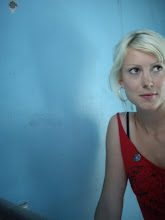- The smaller the aperture, the deeper the depth of field (the other two factors remaining the same). For example, if the lens focal length and the shooting distance stay the same, the depth of field is much deeper at f/16 than at f/1.4.
- The shorter the lens focal length, the deeper the depth of field (the other two factors remaining the same). For example, comparing a 28mm lens with a 50mm lens at the same aperture and shooting distance, depth of field is deeper with the 28mm lens.
- The greater the shooting distance, the deeper the depth of field. i.e. other two factors remaining the same). For example, if the subject is photographed from three and then from seven meters away, the zone of sharpness in the foreground and background is greater at seven meters.
Another characteristic of depth of field is that it is generally deeper in the background than in the foreground.
After working with portraiture photography, i have been trying to determine my constants. Whether it be the light, background, distance, angle or subjects, i needed a constant to connect my work. I wanted the backgrounds to be included in my work to support/compliment the character and the surroundings that they are in. For example the photograph below was taken in the band room at my work, the Arthouse. This was before a gig and i wanted to portray the subject in his natural environment, which compliments his music identity. I had to use a flash for this photo, which i dont usually like to do as it flattens the face. For the other portraiture i have had the subject stand 2 metres from the wall and zoomed right in. I had to move to the correct position to get the portrait. The photo below is not in the position i had wanted, as his head is being chopped off, but i loved his body language.


No comments:
Post a Comment